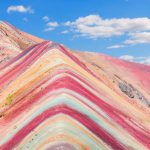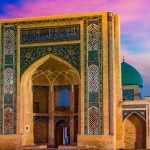Table of Contents
Deserts of Morocco offer more than just camel rides and sunset photos. This 10-day journey takes you deep into landscapes where ancient traditions persist, stars blaze with unimaginable clarity, and silence speaks louder than words. Here’s your day-by-day guide to experiencing Morocco’s desert regions like few travelers ever do.
Day 1-2: Marrakech – Gateway to the Desert
Start in Marrakech, but skip the crowded souks for dessert preparation. Head to the less-visited Mellah neighborhood where specialty shops sell traditional desert gear locals use. The cotton-wool blend scarves at Ahmed’s small shop off Rue de la Kasbah provide better sun protection than tourist versions.
Meet with desert guides at Café Clock rather than booking online packages. These face-to-face conversations let you customize your journey and build rapport before heading into remote areas. Spend your second evening at Al-Fassia, a woman-owned restaurant serving traditional dishes you’ll encounter throughout desert regions.
Day 3: Crossing the High Atlas
The journey across the High Atlas Mountains forms a dramatic transition between Morocco’s green north and arid south. Most tourists race through this segment, but savoring it transforms your desert understanding.
Stop at the 12th-century Kasbah Telouet, once home to the powerful Glaoui family. Unlike restored tourist kasbahs, this crumbling masterpiece reveals how desert architecture evolves through time. The caretaker Ahmed sometimes unlocks rooms with faded ceiling paintings not on the regular tour.
As you descend the southern slopes, notice how building colors shift to match the increasingly arid landscape. Overnight in Ouarzazate at Dar Daif, a guesthouse whose owners provide insight into the region’s water management history, critical to understanding desert life.
Day 4: Valley of a Thousand Kasbahs
The journey from Ouarzazate to Tinghir follows ancient caravan routes through the Dades Valley, where mud-brick kasbahs rise directly from desert soil. While tourists photograph the structures, engage with families still living in these traditional buildings.
In the small village of Timlalain, Mohamed invites travelers for tea in his family’s 300-year-old kasbah. He explains traditional desert architecture’s sophisticated cooling techniques without the theatrical performances found at commercial stops.
Overnight at the Auberge Le Festival in the Todra Gorge, where owner Hassan built guest rooms using traditional desert construction techniques. His sustainable approach to desert tourism includes serving meals made entirely from locally-grown ingredients.
Day 5: Todra Gorge to Erg Chebbi
The drive to Merzouga takes you through landscapes where Morocco’s geological history reveals itself. Most tours rush this segment, but slow travel through changing rock formations explains how deserts form.
Stop at the fossil workshops of Erfoud, where ancient sea creatures embedded in desert rock tell the region’s transformation from ocean to sand sea. Skip the tourist shops for the actual workshops behind them, where craftsmen split rocks to reveal 350-million-year-old creatures.
As you approach the Erg Chebbi dunes, resist rushing straight to the tourist camps. Instead, visit the oasis gardens maintained by the Indigenous Berber people, who explain traditional khettara underground irrigation systems that make desert agriculture possible.
Day 6-7: The Dunes of Erg Chebbi
The massive dunes of Erg Chebbi deserve more than the standard one-night visit. A two-day exploration allows you to experience the desert’s dramatic transformations through day and night.
Skip the crowded sunset camel treks and instead arrange a morning departure with guides from the Ait Atta Berber families. Their traditional knowledge includes identifying medicinal plants growing improbably among the seemingly barren dunes.
For accommodations, pass on the luxury desert camps with generators and instead choose traditional camps like Bivouac Karim, where the absence of electricity lets you experience true desert darkness. The night sky here reveals itself in stages – first, the planets appear, then familiar constellations, and finally thousands of stars are invisible in light-polluted regions.
Day 8: Desert Communities of Zagora
The journey to Zagora traverses landscapes where desert adaptation reaches its peak. This region receives less than 3 inches of rain annually, yet has sustained human civilization for millennia.
Visit the ancient library of Tamegroute, where desert scholars preserved thousands of manuscripts on astronomy and mathematics while Europe experienced its Dark Ages. The curator sometimes shows visitors 13th-century astronomical tables used for desert navigation.
Arrange lunch with families in the M’hamid oasis, where traditional desert agriculture produces dates, figs, and vegetables from seemingly impossible soil. These communities explain how climate change threatens thousand-year-old agricultural practices as water tables drop and sand advances.
Day 9: The Hidden Dunes of Erg Chigaga
Less visited than Erg Chebbi, the dunes of Erg Chigaga offer more authentic desert solitude. Reaching these remote dunes requires 4×4 transportation across the stone desert (hamada) and ancient dried lake beds.
The final approach reveals dunes rising dramatically from flat terrain. Unlike Erg Chebbi’s tourist infrastructure, Erg Chigaga camps maintain stronger connections to nomadic traditions. Camps like La Kahena limit accommodations to ensure minimal environmental impact while providing interactions with desert nomads who still maintain seasonal migration patterns.
Take a walking journey with Amazigh guides who identify subtle signs of desert wildlife – the sidewinding tracks of sand vipers, the circular depressions where desert foxes have hunted, and the barely visible paths used by desert gazelles.
Day 10: The Return Journey
Rather than rushing back to Marrakech, take the desert mountain route through Tazenakht, famous for carpet weaving by women’s cooperatives using natural dyes extracted from desert plants. These artisans explain how traditional designs incorporate symbols representing desert landmarks and water sources.
Stop at Taliouine, the center of Morocco’s saffron production, where desert conditions produce the world’s most concentrated flavors. Visit during the October-November harvest to witness families collecting the delicate crimson threads at dawn before the desert heat intensifies.
As you cross back over the High Atlas Mountains, the transition from desert to Mediterranean climate creates a physical understanding of Morocco’s environmental diversity that no book can provide. The increasing vegetation and changing architecture mirror your journey in reverse, bringing new appreciation for both landscapes.
Desert Journey Practicalities
Experiencing Morocco’s deserts meaningfully requires preparation beyond typical tourist considerations. Water management becomes personal – carry reusable bottles and purification options. Desert temperature fluctuations demand layered clothing even in summer when night temperatures can drop 40 degrees from daytime highs.
The desert rewards those who adjust their sensory expectations. Learn to appreciate subtle color variations in seemingly monochrome landscapes. Train your ears to distinguish levels of silence – from the absolute stillness of sand to the gentle whispers of dune movement. Embrace the slower desert pace rather than rushing between photographic highlights.
Most importantly, approach desert communities with respect for their adaptation to extreme conditions. The knowledge preserved in these settlements – astronomical, botanical, architectural, and cultural – represents humankind’s remarkable capacity to thrive in Earth’s most challenging environments. The true wealth of Morocco’s deserts lies not just in their breathtaking landscapes but in this living heritage that remains available to travelers willing to venture beyond the standard routes.

I’m Garrett, a seasoned photojournalist with a passion for uncovering the world’s hidden treasures. My journey is fueled by a deep curiosity for diverse cultures and breathtaking landscapes. When I’m not behind the lens capturing the world’s wonders, you can find me exploring underwater realms or sharing my passion for discovery with my two adventurous children.




